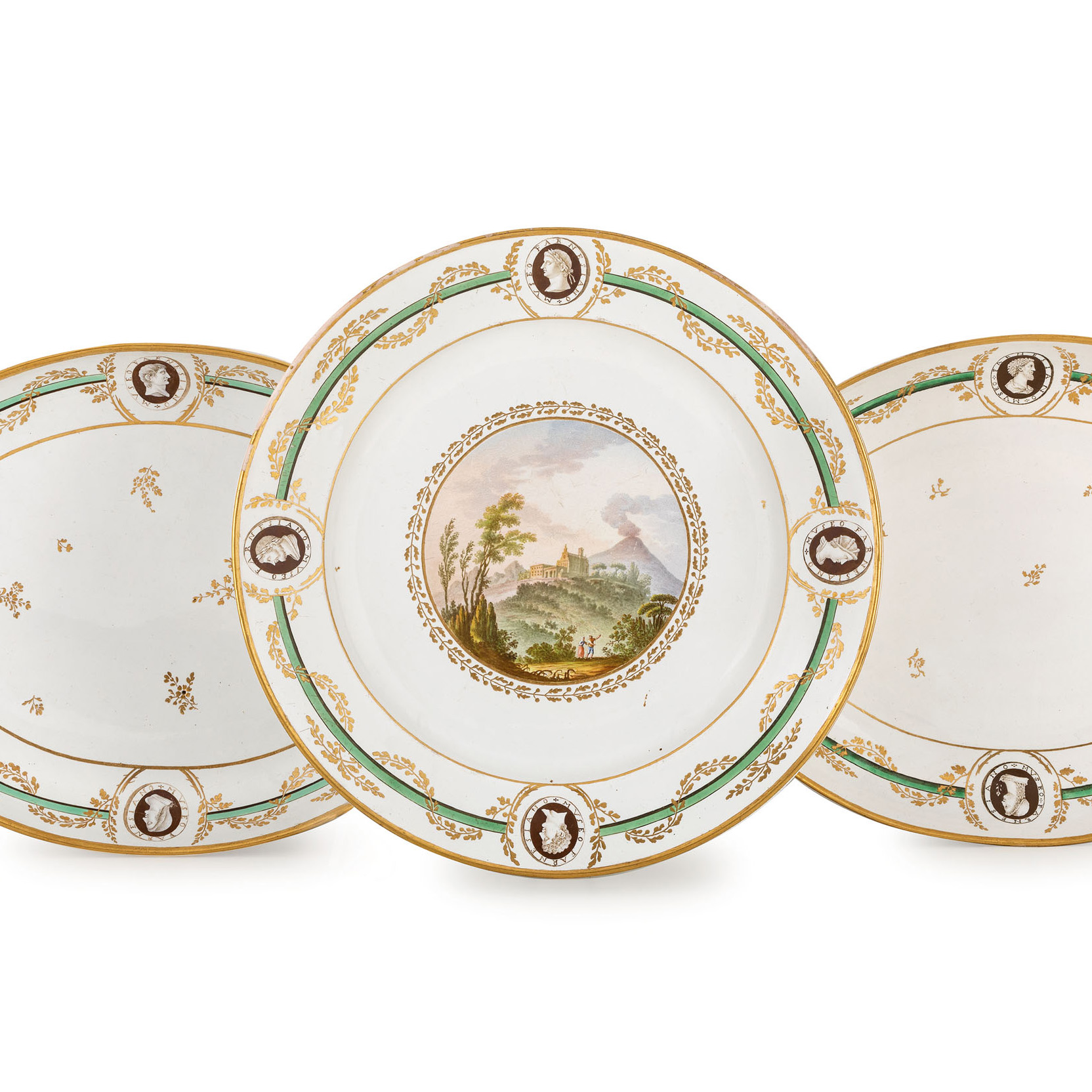The polychrome porcelain plate from the Naples Porcelain Manufactory datable between 1784 and 1788 and decorated with a View of Vesuvius, taken from Monte S. Angelo at the Monis. re de Camandoli (as inscribed) – together with two oval plates of service en suite – coming from the Marquis of Sambuca and by descent to the present owners (lot 100, estimate Euro 4,000 – 5,000), is part of the so-called Farnesian Service, a name derived from the border decorated with cameos inscribed, precisely, Farnesian Museum.
The significance of the taste for vedutism, of which this ensemble is a distinctive example, in the porcelain produced in the royal factory has been studied on several occasions, among others in 1986 by Angela Caròla Perrotti (A. Caròla Perrotti, Le porcellane di Borbone di Napoli, exhibition catalogue, Naples, 1986, p. 376-377, card 296). On that occasion, the scholar dealt precisely with the Farnese Service, made between 1784 and 1788 and the first large set decorated with views of Naples and other parts of the Kingdom. It emphasised the efforts made in the realisation of the service, which was particularly sophisticated in taste and for which new forms of crockery were probably developed, accompanied by decorations of great pictorial quality.
Various sources were used by the painters: the best known being William Hamilton’s Phlegraean Fields of 1776 and images from Saint-Non’s Voyage pittoresque, published in Paris between 1781 and 1786. For a study of the porcelain already owned by the Marquis of Sambuca, a central figure at the Court of Naples in the second half of the 18th century, see Angela Caròla-Perrotti, Le porcellane del Marchese della Sambuca (in F. Baldassarri, M. Confalone, Gli amici per Nicola Spinosa, Rome 2019).
548 Views |
Like



